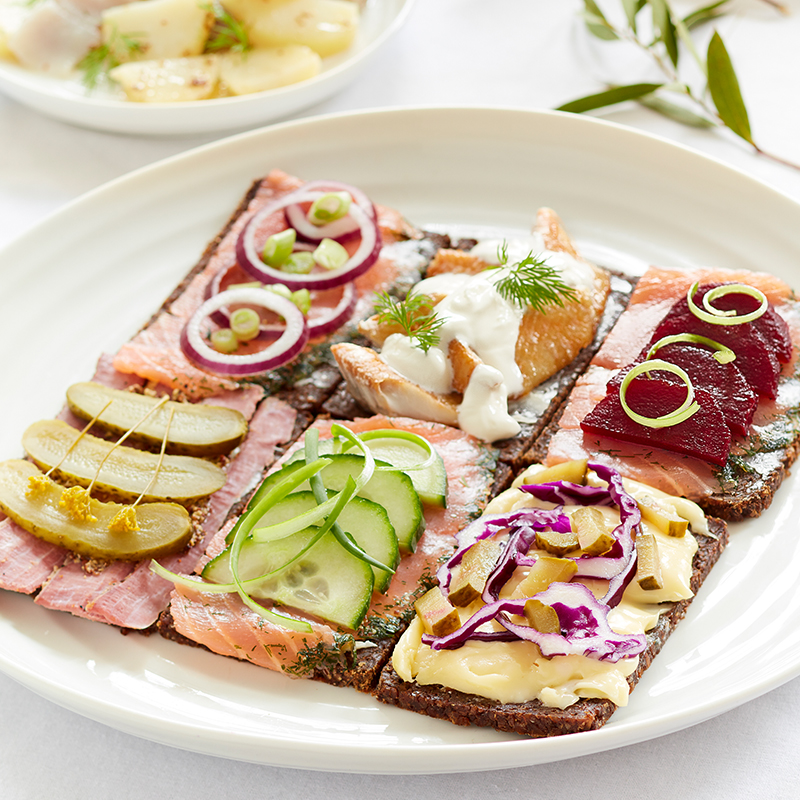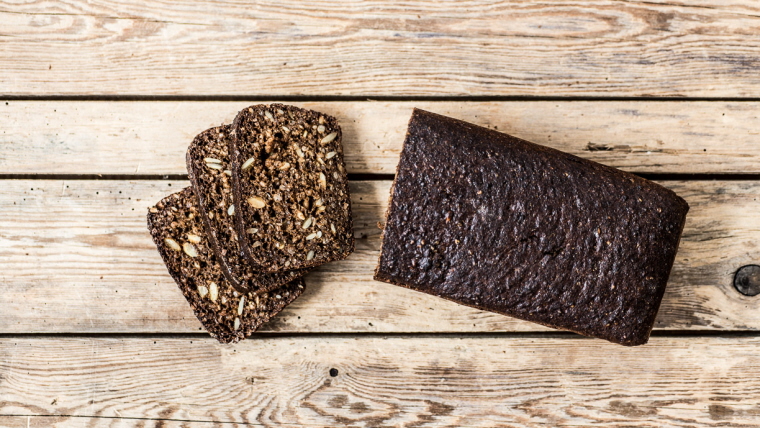Danish food culture has been cultivated and improved for many generations and is mainly rooted from the old country kitchen and the cold weather conditions in Denmark. The cold and often wet climate in Denmark requires a lot of food with high nutritional values that contains many vitamins - minerals and proteins to mobilise a great potion of energy - which is a vital source - needed for work - school - sports and other form of daily activities - when living in a dynamic and modern society like Denmark that demands plenty of human recourses every day.
A Delicious Taste of Denmark
Preserved Danish food
The natural content and ingredients in Danish food culture has been built up for centuries and flavoured to match the taste of the traditional eating habits of the Danish people from region to region and up to this century.
To preserve food in olden days - the items of meat - fish and fruit was either salted - smoked or brine-pickled and could be stored for a very long time.
The modern Danish kitchen uses many old recipes from the non refrigeration period - and is still highly preferred and enjoyed at the dinner tables in Denmark.
Traditional and Conservative Food Culture
Rye bread and beer has for thousands of years been a basic part of the daily food consumption and later potatoes and heavy gravy was the main supplement to fish and meat dishes.
The present Danish food culture is still very traditional and conservative - and is nevertheless based on deep-rooted recipes prepared during generations and centuries - in spite of influence from foreign countries and cultures
Danish "Smørrebrød"
Almost every Danish restaurant in Copenhagen serve the traditional "open faced sandwich" called "smørrebrø;d" - with many different potions of food items as cold cuts - pieces of meat or fish - various paste - salad dressings and cheese on buttered rye bread and decorated with all types of toppings that gives the creation a great visual appeal - and is surely a piece of genuine art, when presented on a well laid table with cold Danish beer and snaps.
 “Smørrebrød” is normally served together with the famous Danish beer and snaps.
“Smørrebrød” is normally served together with the famous Danish beer and snaps.
Smørrebrød and Rye Bread - History in brief
During the 1840s - workers - framers - labourers and others employees had a sort of luncheon packet with different types of flat “Smørrebrød” for their lunch.
Each slice consists of a piece of buttered rye bread (rugbrød) - and thin pieces of homemade cold cuts - pieces of meat or fish - cheese - homemade bread spreads and liver paste as toppings. Sometimes the toppings were placed between to pieces of the rye bread - just like in a sandwich.
1000 years with Rye Bread (Rugbrød)
 The Danes has been baking and eating rye bread for the last 1000 years and for generations.
The Danes has been baking and eating rye bread for the last 1000 years and for generations.
Danish rye bread is very popular and used at the breakfast table and for the open faces sandwiches - as well of being an important part of the everyday food consumption in Denmark.
Each Dane eats about 20-25 kg of rye bread per year - which is around 8.5-9.0 million slices of various rye bread sorts every day - and Danish farmers harvest over 260,000 tons of rye yearly for home and the export markets.
The rye bread is very suitable for the Nordic climate - and was introduced to the British - when the Vikings conquered Britain around year 980 AC.
Rye Bread is very healthy
The traditional Danish rye bread is a bit different from other Scandinavian countries and German baked rye bread - as it is respectively less sweet but more dark and sour then the rye bread baked and served in other European countries.
The rye bread is rich in whole grain and full of dietary fiber with no fat - and a healthy alternative to other types of white bread - as rye also offers nutrient values like - phosphorus - magnesium - manganese - protein and vitamin B1.
It takes more then 24 hours to prepare the sourdough and bake the rye bread.
Smørrebrød on the menu
Later during the 1880s - the Danish “Smørrebrød” turned in to be a more sophisticated type of luncheon specialty - and the really high topped “Smørrebrød” with delicious brown rye bread was invented with a variety of delicious topping stacked on top of each other.
The very first restaurant offering high topped “Smørrebrød” on their menu was Restaurant Nimb at Tivoli in 1883. Restaurant Nimb still exists - and is a part of Tivoli Gardens.